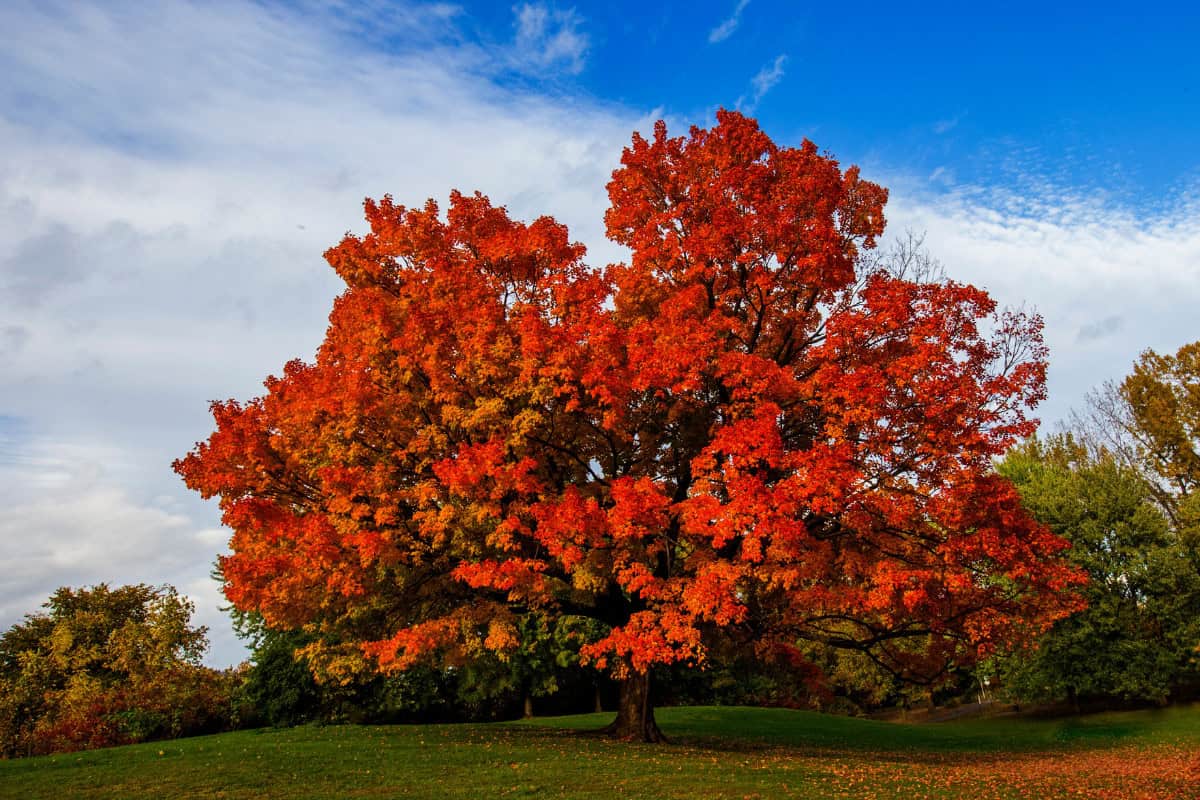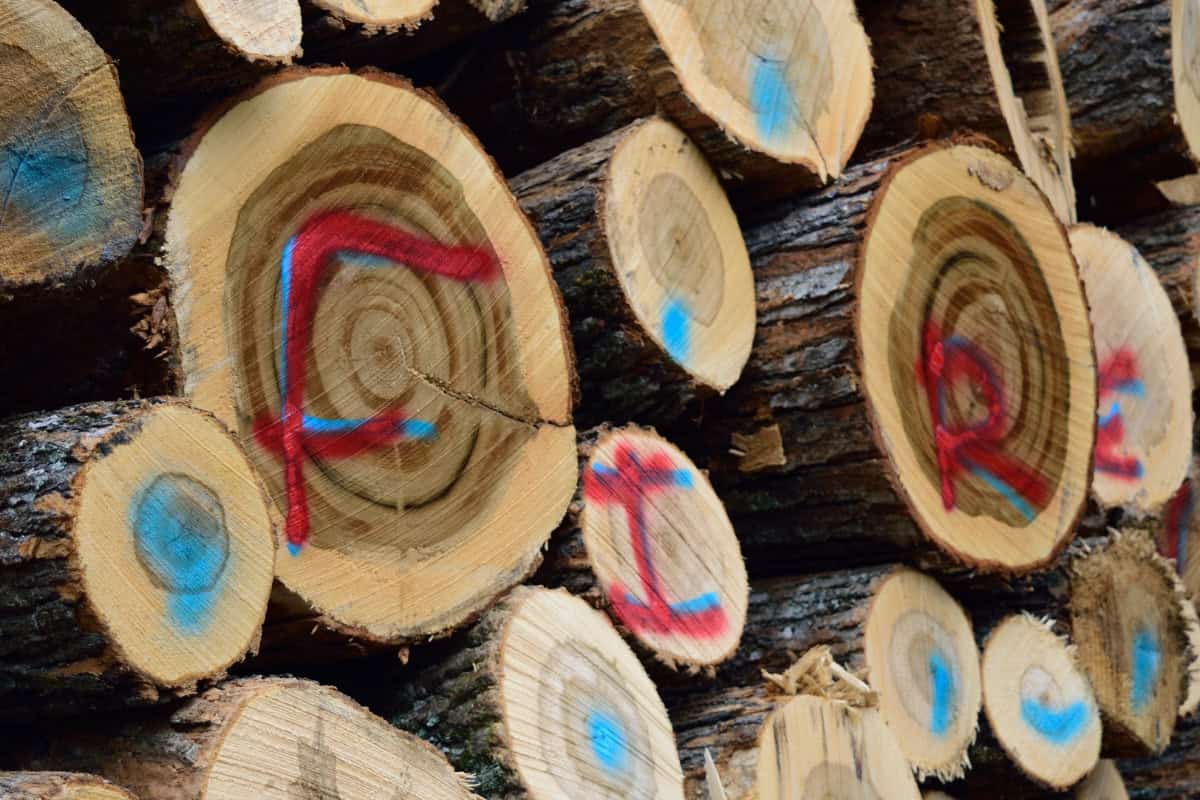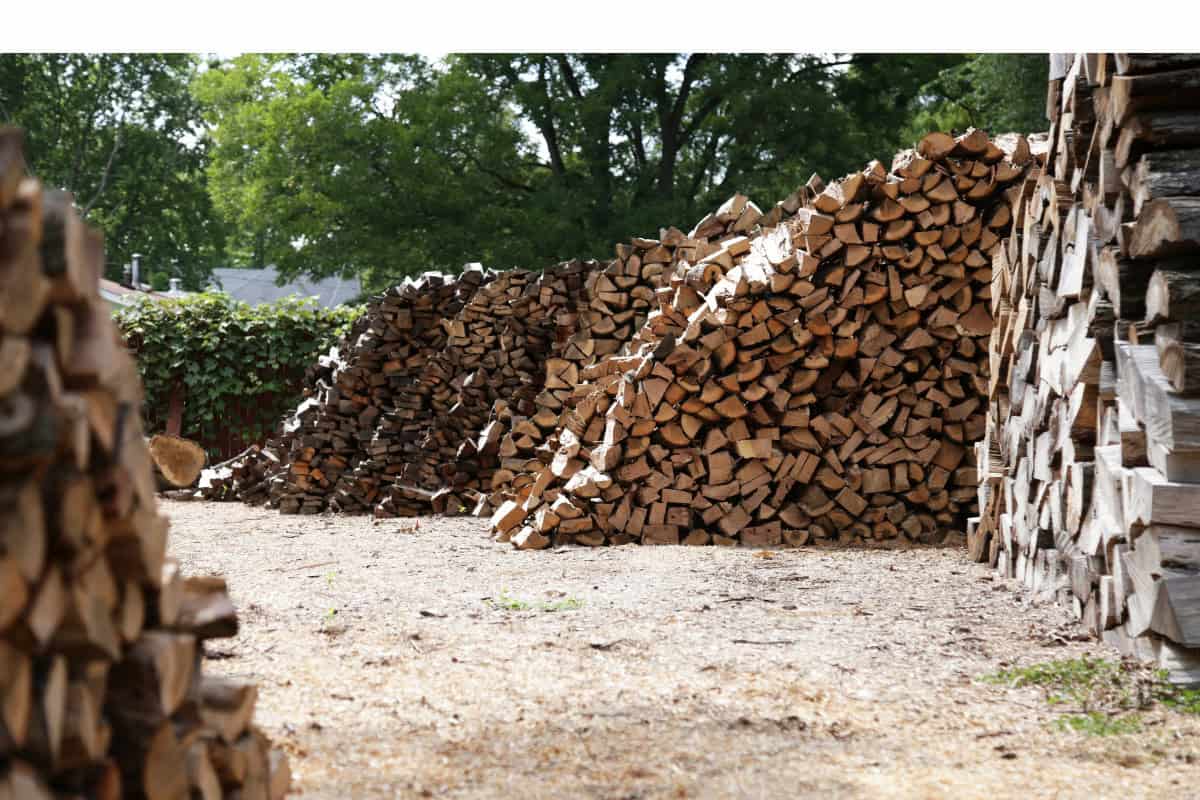
Canadian firewood prices for recreational fire pit use range from $200-800 per cord with dramatic seasonal price swings of up to 60% and significant regional variations driven by species availability and transportation costs.
Alberta suppliers report 10x higher demand than available supply, reflecting a permanent shift toward outdoor living that has transformed this traditionally home-heating focused market into a recreational entertainment industry worth an estimated $400-600 million annually.
The COVID-19 pandemic created a perfect storm of increased demand for backyard entertainment spaces while disrupting traditional supply chains, leading to sustained price premiums and quality concerns that persist through 2024-2025.
Fire pit users typically need 1/2 to 1 full cord per season for regular recreational use, with optimal buying windows in spring/early summer offering 50-60% savings compared to peak winter pricing.
Understanding Canadian firewood prices helps consumers make informed purchasing decisions throughout the seasonal cycle.
By the way, for an easy way to find trusted local suppliers in your area, check out our Canadian firewood vendor directory.
Let’s jump in!
A Note to Our Canadian Readers:
We’re a US-based site with significant international readership, with Canada being one of our largest international audiences.
Therefore, we conduct thorough research on Canadian reports like this firewood pricing guide. However, we’ll occasionally make mistakes despite our best efforts.
We fully own any errors in our reporting. Additionally, we genuinely appreciate feedback from our Canadian readers to help us improve accuracy.
Your insights help us serve you and fellow readers better. Thank you for your patience and contributions!
Best regards,
– BT
- Canadian firewood prices vary dramatically by region
- Canadian firewood has three quality-driven price levels
- Seasonal demand creates massive price opportunities
- Wood species determine heat output and pricing hierarchy
- Market dynamics reflect outdoor living transformation
- Storage and buying strategies maximize value and quality
- Market outlook shows continued growth with supply constraints
- Wrap-up: Canadian Firewood Prices
- Related Resources: Canadian Firewood Prices

Canadian firewood prices vary dramatically by region
Canadian firewood pricing varies dramatically by province, wood species, and seasonal demand.
Prairie provinces offer the lowest costs at $200-300 per cord for mixed softwoods, while premium hardwood regions command $400-600+ per cord.
British Columbia’s coastal markets reach the highest prices at $500-800 per cord due to transportation challenges and limited local hardwood availability.
Ontario leads in hardwood variety and pricing stability, with mixed hardwood cords ranging $460-490 delivered, while face cords sell for $120-220.
The Greater Toronto Area commands premium pricing at $460-600 per cord due to high urban demand and delivery costs.
Quebec markets show strong value with sugar maple at $360 per full cord equivalent and mixed hardwood at $350-450.
These regional variations make Canadian firewood prices highly location-dependent for consumers across the country.
Atlantic provinces reflect transportation economics, with Nova Scotia’s premium 100% hardwood (85-90% maple) available through registered bulk suppliers offering 10% rebates.
New Brunswick provides mixed hardwood at $300-340 per cord, while remote areas in Prince Edward Island and Newfoundland face premium pricing of $300-450 due to limited local supply and shipping costs.
| Province | Softwood Mix | Mixed Hardwood | Premium Hardwood | Face Cord |
|---|---|---|---|---|
| Alberta | $300 | $400-500 | $800 (Birch) | N/A |
| British Columbia | $400-440 | $400-540 | $500-540 | $260-380 |
| Saskatchewan | $250-300 | $325 | $550-600 (Birch) | $20/cu ft |
| Manitoba | $200 | $300-400 | $500 (Oak) | N/A |
| Ontario | N/A | $460-490 | $400-600 | $120-220 |
| Quebec | $180 equiv | $350-450 | $360 (Maple) | $60-120 |
| Atlantic | N/A | $300-340 | $340+ | N/A |
Transportation costs significantly impact final pricing, with local delivery fees ranging $25-50 within 25km, expanding to $40-100 for regional delivery up to 60km.
Urban areas typically pay 15-30% premiums over rural pricing due to delivery complexity and higher demand density.
Understanding these factors helps explain why firewood prices in Canada can vary so dramatically between neighboring regions.

Canadian firewood has three quality-driven price levels
Canadian firewood follows CSA ISO 17225-5 standards with moisture content serving as the primary quality indicator.
What is CSA ISO 17225-5?
CSA ISO 17225-5 is the Canadian adoption of the international standard establishing fuel quality classes and specifications for graded firewood used in residential and commercial applications. The standard covers firewood from whole trees, stem wood, logging residues, and chemically untreated wood processing by-products. It establishes quality classifications based primarily on moisture content, plus physical dimensions and contaminant levels. This facilitates efficient market trading and ensures consumers receive firewood meeting defined performance standards for safe, effective combustion.
Kiln-dried wood commands 25-40% premiums over seasoned alternatives, while green wood offers 20-30% discounts for buyers willing to season wood themselves. These quality differentials are a major factor driving Canadian firewood prices across different market segments.
Kiln-dried premium tier ($500-800+ per cord) guarantees moisture content under 20% through controlled heating at 160°F minimum for 3+ days. This ready-to-burn option provides immediate use capability and clean burning characteristics essential for fire pit applications.
Victoria Firewood and other premium suppliers document drying temperature to verify kiln-drying processes.
Seasoned standard tier ($275-500 per cord) represents the market mainstream, featuring air-dried wood at 18-25% moisture content after 6 months to 2+ years of storage. Most Canadian suppliers operate in this segment, offering reliable burning characteristics with moderate preparation time.
Quality verification through moisture meters helps consumers confirm proper seasoning levels.
Green economy tier ($200-350 per cord) appeals to budget-conscious buyers willing to invest seasoning time. With 40-60% moisture content, this option requires 6-24 months additional drying but can deliver substantial cost savings for advance planning.
Proper storage infrastructure becomes critical for green wood buyers to achieve optimal burning characteristics.

Seasonal demand creates massive price opportunities
Spring and early summer purchases deliver the most dramatic savings, with price reductions of 50-60% compared to winter peak demand. A full cord costing $400 during winter heating season may sell for $250 during spring clearance periods, creating substantial value for strategic buyers.
These seasonal patterns significantly influence firewood prices in Canada throughout the year.
Peak season pricing (October through February) reflects doubled demand as recreational users compete with home heating customers for limited supply. Alberta suppliers report being unable to meet demand during these periods, with many selling out completely by December.
Premium hardwoods become particularly scarce, forcing consumers toward higher-priced alternatives or lower-quality options.
Optimal buying windows span March through July, when suppliers receive fresh inventory from spring logging operations and compete for storage space. June through August offers the best balance of availability, quality, and pricing for fire pit users planning ahead.
Early spring buyers of green wood maximize savings while ensuring proper seasoning time for fall use. Understanding these cycles is essential for managing Canadian firewood prices effectively.
Regional seasonal variations show western provinces experience more dramatic price swings due to challenging transportation during winter months. Eastern provinces with established supply chains show more moderate seasonal fluctuations but still reward advance planning with significant savings.

Wood species determine heat output and pricing hierarchy
Hardwood species command premium pricing due to superior heat output and longer burning characteristics ideal for fire pit use. Sugar maple and oak lead the hierarchy at ~27 million BTU per cord, justifying pricing of $450-600+ per cord in eastern markets where these species grow naturally.
Regional species availability drives local pricing structures. Ontario’s diverse hardwood forests support premium maple, oak, ash, and birch at competitive prices. Quebec’s sugar maple industry creates competition for firewood supply, maintaining higher pricing despite abundant forests.
Western provinces rely primarily on softwood species, with tamarack/larch commanding premium softwood pricing at $400-550 per cord due to higher BTU output. Species selection remains a key factor influencing firewood prices in Canada across different provinces.
Birch emerges as a high-value option across most provinces, offering excellent fire characteristics at $600-800 per cord in Alberta markets. Its papery bark provides natural fire-starting capability while delivering substantial heat output. Yellow birch in maritime provinces benefits from 150+ year lifespans, creating dense, high-quality firewood.
Softwood species serve specific fire pit functions at economy pricing of $200-350 per cord. Spruce, pine, and fir excel as kindling and quick-heat sources, while Douglas fir in British Columbia offers higher BTU content than typical softwoods. Mixed softwood bundles provide the most economical option for casual fire pit users.
| Species Category | BTU/Cord | Price Range | Best Use |
|---|---|---|---|
| Oak, Sugar Maple | ~27 million | $450-600+ | Long burns, coaling |
| Ash, Yellow Birch | ~20 million | $400-550 | All-purpose burning |
| Tamarack/Larch | ~18-20 million | $400-550 | Premium softwood |
| Mixed Hardwood | ~15-25 million | $350-500 | General fire pit use |
| Spruce/Pine Mix | ~15-17 million | $200-350 | Kindling, quick heat |

Market dynamics reflect outdoor living transformation
The Canadian fire pit market reached $348.8 million in 2022 and projects growth to $613.6 million by 2030 at 7.3% CAGR, driven by permanent behavioral shifts toward outdoor entertainment.
This recreational segment now competes directly with traditional home heating demand, creating supply constraints and price premiums that continue to shape Canadian firewood prices.
Supply chain factors significantly impact availability and pricing. Mountain pine beetle damage in British Columbia, record wildfire seasons, and climate change effects reduce available timber while transportation disruptions from rail strikes and weather events complicate distribution.
Sawmill utilization at 72% capacity creates bottlenecks in processing, particularly for value-added products like kiln-dried firewood.
Regulatory pressures shape market structure through emission standards driving demand for cleaner-burning, properly seasoned wood. Urban areas increasingly restrict traditional wood burning, creating premium markets for kiln-dried options.
80km movement restrictions to prevent pest spread require local sourcing, supporting regional supplier networks while limiting consumer options.
People are getting pickier about quality because when you’re hosting friends around the fire pit, you want wood that lights easily, burns clean, and doesn’t smoke everyone out.
Fire pit entertainment needs wood that actually works reliably, which is why the premium stuff is selling so well. Firewood prices in Canada reflect this shift toward quality-focused purchasing as consumers invest in better outdoor experiences.
Online ordering and delivery tracking are making this traditionally local business way more modern and convenient.

Storage and buying strategies maximize value and quality
Proper storage infrastructure protects firewood investments while ensuring optimal burning performance.
Canadian climate conditions require elevation 6+ inches off ground to prevent frost line moisture absorption, with top-only covering using waterproof tarps while maintaining side ventilation.
Sun exposure maximizes natural drying while 30+ feet distance from structures deters pest problems.
Strategic buying approaches deliver substantial savings through timing and volume optimization.
Green wood purchases in early spring provide maximum cost savings for buyers with proper storage capabilities and patience for 6-24 month seasoning periods.
Bulk orders of 2-3+ cords unlock volume discounts of $50-100+ per cord while reducing per-delivery transportation costs. These strategies help consumers better manage Canadian firewood prices over time.
Getting to know your local supplier is worth it – you’ll often get 20-30% better pricing than retail, plus you can actually check out the wood quality before buying, and they’ll hook you up with priority service when everyone else is scrambling for wood in winter.
Compare Canadian firewood prices from different local suppliers since those bundles at gas stations cost 75-85% more than buying in bulk, so only grab those if you just need a few logs for one night.
Check out Kijiji and Facebook Marketplace for local suppliers who often have competitive pricing and can deliver whenever works for you.
Quality verification through moisture meters ($20-200) helps consumers confirm proper seasoning levels and avoid wet wood that burns poorly.
Traditional ring tests – knocking pieces together to hear dry wood’s distinctive ping versus wet wood’s thud – provide field verification methods.
Visual indicators include loose bark, weathered appearance, and weight reduction compared to green wood.

Market outlook shows continued growth with supply constraints
Price predictions for 2025-2026 suggest moderate increases of 3-5% annually driven by supply-demand imbalances and transportation cost inflation.
Recreational demand growth at 5.6% CAGR outpaces traditional supply chain expansion, creating sustained upward pressure on pricing.
Climate change impacts on forest health through increased wildfire, pest outbreaks, and weather disruptions threaten long-term supply stability. These factors suggest firewood prices in Canada will continue trending upward in the coming years.
Value-added opportunities emerge in kiln-dried, pre-packaged products targeting convenience-focused urban consumers. Delivery services expansion addresses last-mile challenges in metropolitan markets willing to pay premiums for professional service.
Sustainable sourcing certification appeals to environmentally conscious consumers while supporting premium pricing structures. The outlook for canadian firewood prices remains positive despite supply challenges.
Industry consolidation may accelerate as successful suppliers invest in equipment, storage infrastructure, and technology systems to serve growing recreational demand.
Regulatory compliance costs favor larger operators capable of meeting emission standards and pest management requirements.
Competition from alternative heating sources like gas fire pits grows at 8.8% CAGR, requiring firewood suppliers to emphasize authentic outdoor experience benefits.

Wrap-up: Canadian Firewood Prices
The Canadian firewood market has transformed from a traditional home heating commodity into a recreational lifestyle product worth hundreds of millions annually.
Strategic buyers can achieve 50-60% savings through spring purchases and bulk ordering while quality-conscious consumers find premium kiln-dried options increasingly available.
Regional pricing variations of $200-600+ per cord reflect transportation costs, species availability, and local demand patterns that reward informed buyers willing to source locally within 80km of use.
Fire pit users requiring 1/2 to 1 cord annually should focus on seasoned hardwood species from local suppliers, timing purchases for spring delivery, and investing in proper storage infrastructure.
Understanding Canadian firewood prices enables better purchasing decisions throughout the seasonal cycle.
Market growth projections suggest continued expansion despite supply chain constraints, supporting long-term industry viability while maintaining price premiums for quality products.
The outdoor living trend appears permanent, creating sustained demand that transforms this seasonal commodity into a year-round lifestyle market with significant economic impact across Canadian provinces.
For consumers navigating firewood prices in Canada, success depends on strategic timing, quality assessment, and building relationships with reliable local suppliers.


